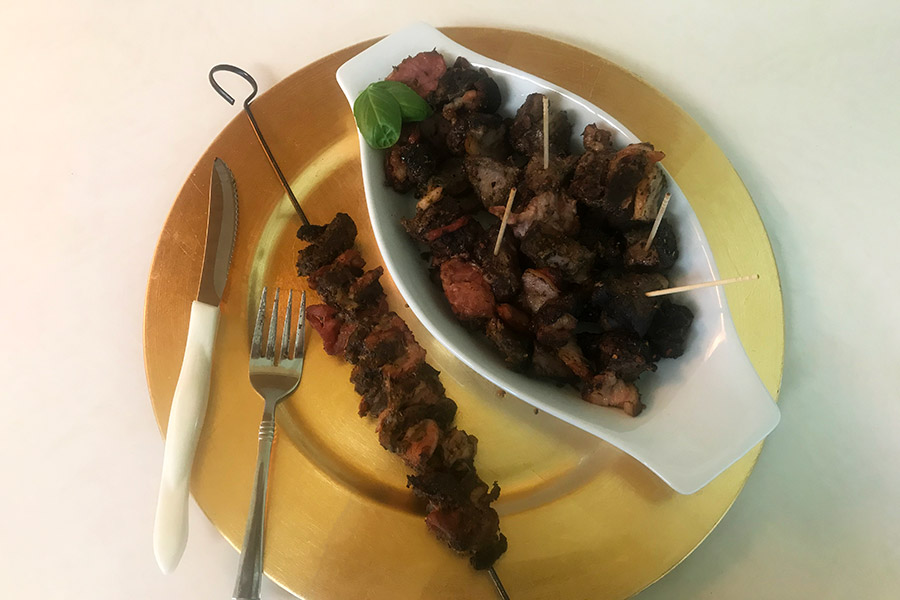Coot surprise
Who would have thought?
By Bryan Christensen
Dedicated Hunter and Walk-in Access Programs Coordinator
This recipe deserves a disclaimer: I am the only waterfowl hunter I know that actively pursues coot to eat. Despite the ridicule and shaming expressed by my hunting companions, I stand today with an upright chin and declare openly: Coots are worth eating!
If you disagree with me, either you've eaten coot that was cooked wrong, or you've never had one at all. To support my claim, let me say this: If you take a 20 oz., prime T-bone steak and boil it in plain water for 20 minutes, you'll never eat beef again. The same principle applies to wild game — until you develop a palette that accepts that not all meat should taste like beef or chicken, you may need more preparation for different or unfamiliar flavors than the average tri-tip cattle steak.
After several years of successful hunts and learning different ways to cook, I no longer find beef as appetizing as deer, elk, and yes, even coot. You too can evolve, but start rationally, work with your favorite meat flavors and enjoy your harvest.
Coot has a different flavor than other waterfowl, and I'd bet it has more to do with the mud and water that they feed in than any other factor. So, if you hunt coot in sewer ditches and then in clear freshwater reservoirs, you'll likely find that each tastes different. One commonality though, is that coot is a fatty bird with a bit of a tangy flavor that should be worked with, not fought.
Ingredients
- 4–6 coots
- ½–¾ cup of pure cane sugar
- Salt, pepper, as desired
- Your favorite soda (I prefer a Jamaican style ginger beer, apple beer, Sprite or 7 Up. Don't use diet sodas — that's just wrong.)
- Your favorite barbecue sauce
- Spices
- Dried onion
- Ground red pepper or red pepper flakes
- Parsley
- Rosemary
- Paprika
- Garlic
- ¼–⅓ lb. of bacon
Directions
It should be noted that, with the brining step, this recipe will take several days to complete.
Step 1:
Go out and get youself some coot meat. For this recipe, you'll need 4 to 6 birds.
Step 2:
Field dress your birds. I like the "foot/wing" pull method, but you can also just carve the breast meat into 2 fillet chunks. Coots have some meaty drumsticks, so the legs are worth keeping also.
Step 3:
Clean the meat. Rinse it with cold water and trim off the fat layer. The fat holds some strong, gamey tang, and is worth trimming away to discard.
Step 4:
Brine: There are lots of ways to do this.
The goal of brining is to extract blood from the meat and begin breaking down the tissue to a softer texture that will accept other flavors and not end up like leather. My preferred method is to put the meat in a gallon ziplock bag that is about half full of water, and add ½–¾ cup of pure cane sugar (sugar in the raw, because coots get offended by being cooked in plain processed sugar!) and about two tablespoons of salt. Use good salt — not the stuff that has been soaking up the smell of your basement for the last 10 years.
Let the bag soak in your fridge for about 24 hours. Then, drain out the brine and add a new batch of water and sugar, this time without the salt. This mixture becomes more of a marinade, but it will continue to extract the blood from the meat and soften the texture.
Get spunky and add your favorite soda! I prefer a Jamaican style ginger beer, apple beer, Sprite or 7 Up. Don't use diet sodas — that's just wrong.
This time, let the bag soak for 1–3 days. If you used a cheaper soda, consider a shorter timeframe, like one day.
Step 5:
Once the meat has soaked sufficiently, remove it from the brine and cut it into 1–1½-inch pieces. Coat each piece with your favorite barbecue rub. I also like a mix of spices that create a sweet rather than savory flavor. Try a mix of dried onion, ground red pepper or red pepper flakes, parsley, rosemary, paprika, salt, garlic and sugar. I don't recommend sage or mace with coots.
Step 6:
Add cheap bacon. This is where I get grief from my family. "Oh," they say, "the magic bacon trick!" Well, here's the thing: Bacon is delicious. It also has high fat content and will not only transfer some of its flavor, but will keep the coot from drying out when you cook it. Besides, people eat bacon on burgers, and that's not wrong.
Cut ¼–⅓ lb. of bacon into 1" or 2" pieces.
Step 7:
Alternate the bacon and coot on skewers.
Step 8:
Cook the coot meat and bacon together. If you have a smoker, go with 220–240° F for about 25 minutes and use a fruitwood like peach, apple or cherry. Don't do hickory or mesquite unless you blend it with alder or a fruitwood. If you're using an oven, broil the coot and bacon at 500° F for about 15 minutes.
Keep an eye on everything! Poultry temperature is what you are looking for, but the meat can be overcooked easily because it's in small pieces.
Step 9:
Once the meat is cooked, remove it from the oven and let it cool for a bit. Then enjoy! Tell the people you're sharing it with that it's pintail or gadwall, and they'll never know the difference.
And remember, if you don't like it, you did the whole thing wrong.


